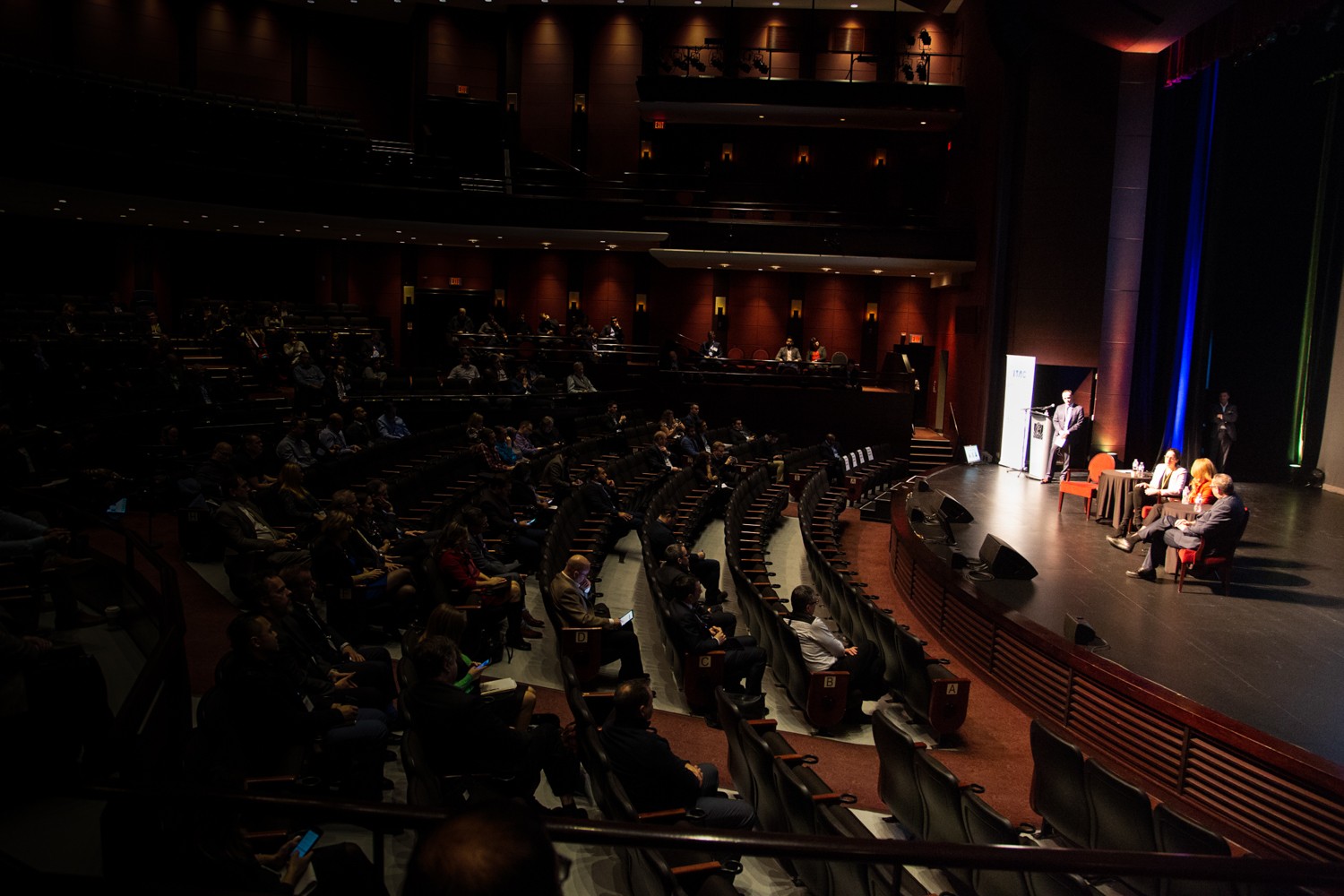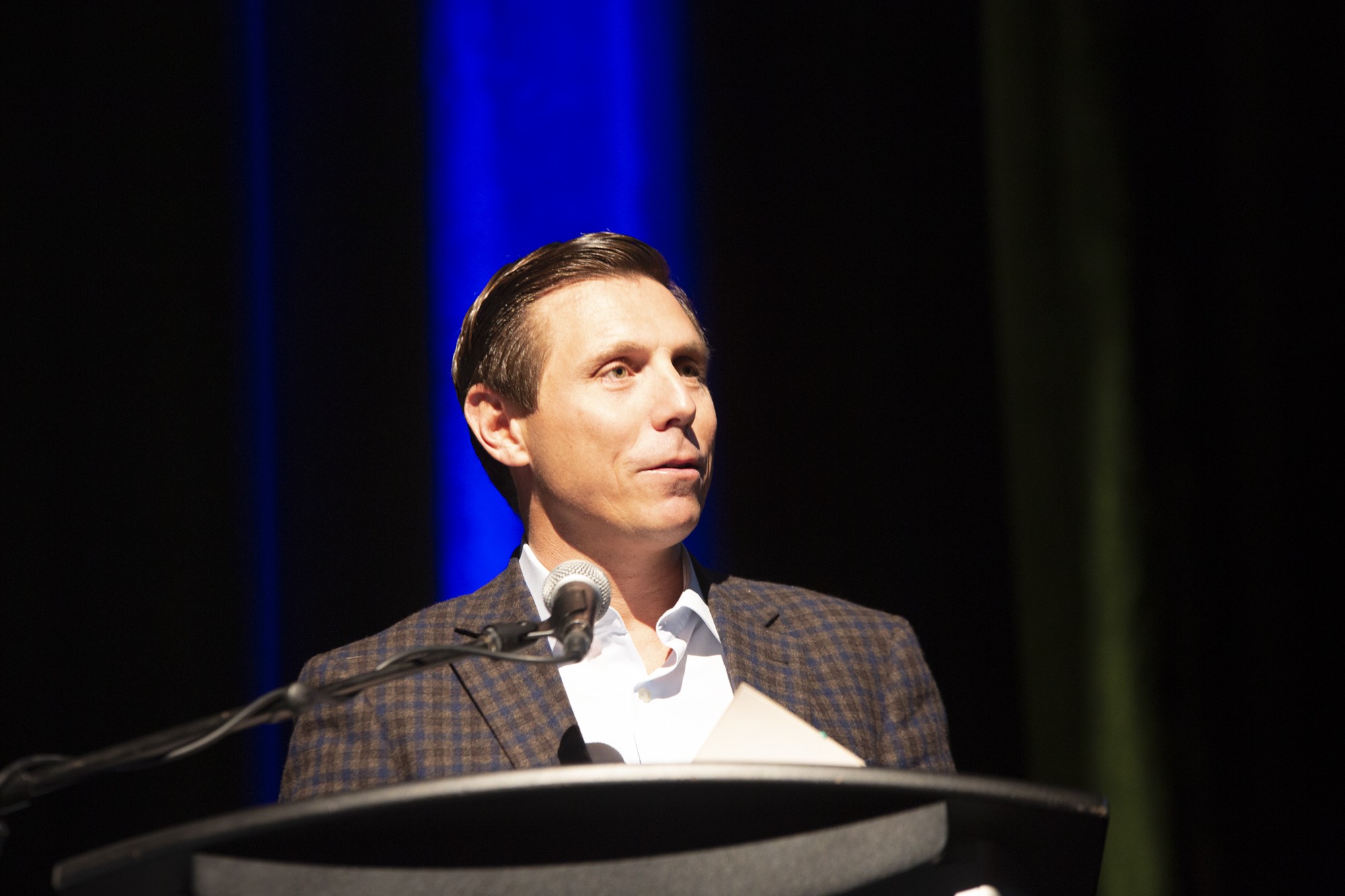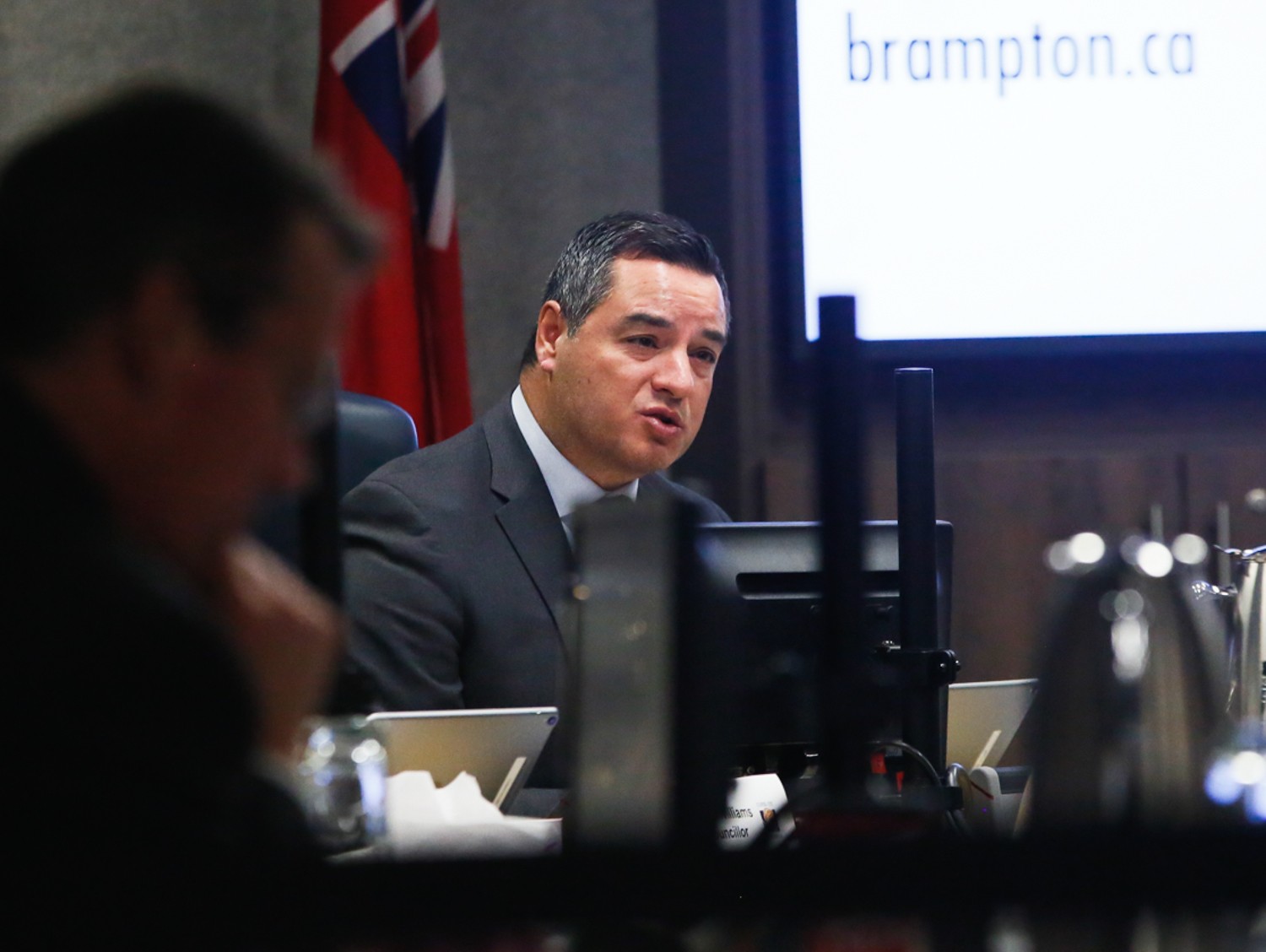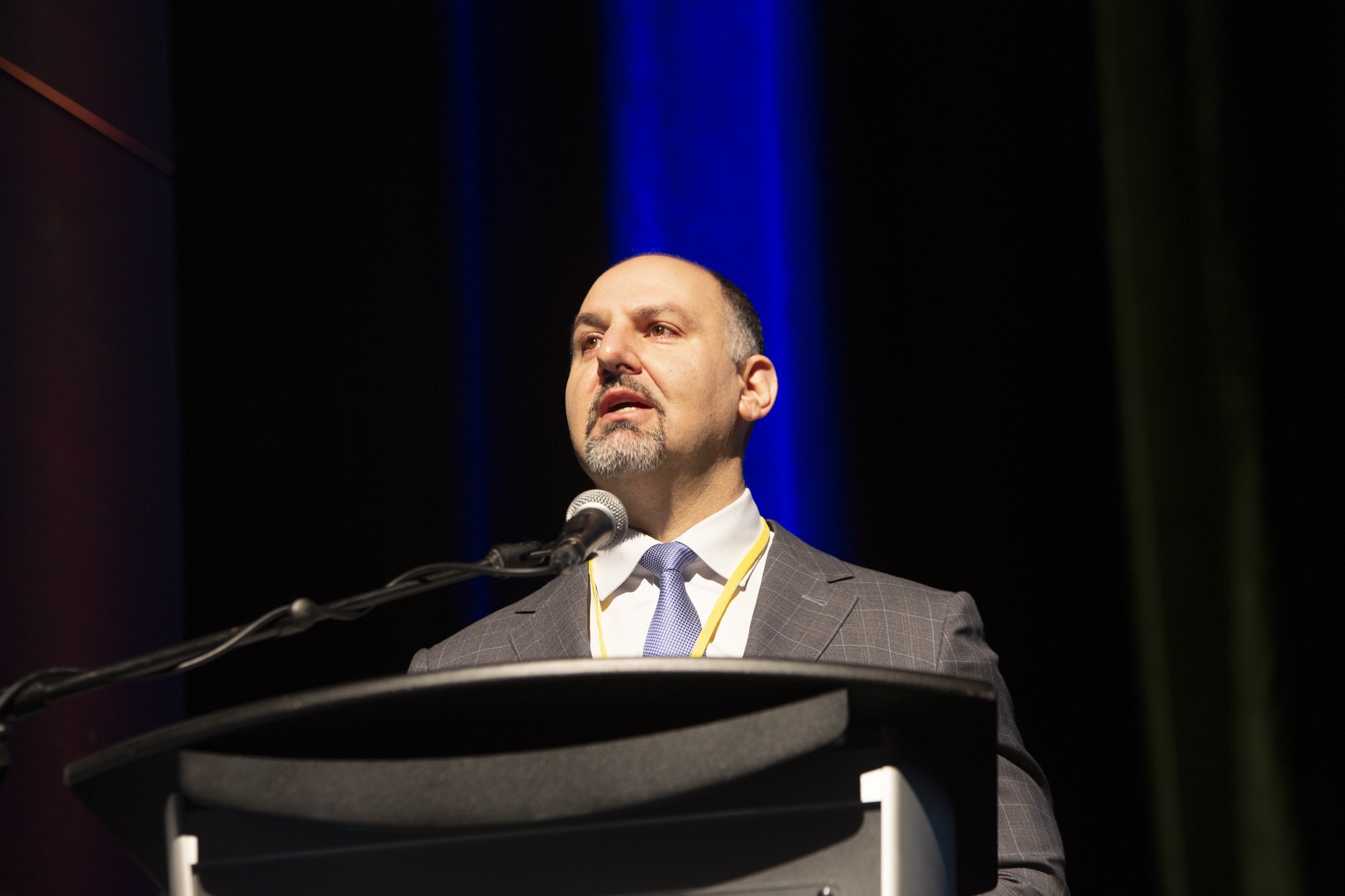
Smart Cities Summit hints at solutions for Brampton’s tax woes
A day after the City of Brampton revealed its draft proposal for a 2019 budget, the city, in partnership with the Information Technology Association of Canada, held a Smart Cities Summit at the Rose Theatre. The Smart City concept refers to integrating new information and communication technologies to optimize the way the city works.
The varied areas of discussion on Tuesday included data privacy, modernizing city services, and digital transformation networks. But one of the more intriguing panels was about mobility in the city, namely transportation as both a mover of people and a driver of economic growth.
In a city where residential property taxes make up the lion’s share of revenue, there is a need now, more than ever, to find ways to offset that burden. A possible remedy lies in bringing more business to the city, and investment in transportation could help to bring that about. A robust transportation system, such as the proposed light rail route through the downtown, could move enough people to create a demand for more businesses and employment in an area.
“I can tell you that our main priority at city hall is economic development,” Brampton Mayor Patrick Brown said in his opening remarks at the summit. “We view the smart city initiative [as being] absolutely in line with those aims. Taken together, these factors are taking Brampton to that point where business, technology, academia and local government intersect in a way to drive growth.”

Mayor Patrick Brown
“The geography of the [Toronto-Waterloo] innovational corridor is very important. We’re in a fortuitous position that many municipalities would love to be part of that super-innovation corridor. We have that natural advantage, but you gotta put that energy behind it,” Brown told The Pointer after his opening speech.
The Toronto-Waterloo Innovation Corridor is envisioned as a cluster of innovation hubs in which Brampton could become a vital link. At a committee of council meeting in mid-February, Mohamed Dhanani, special advisor to the president of Ryerson University, stressed how investment in the corridor will aid businesses and urged councillors to capitalize on it by supporting steps to make Brampton the “cyber-security capital of Canada.” Former mayor Linda Jeffrey talked about her vision of Brampton becoming a Silicon Valley of the north.
“The reality is, there is a lot happening in Toronto and there is a lot happening in Waterloo. There is not a lot happening in between, and we think this is a huge opportunity,” said Dhanani.
Brown sees the value of a combined program to keep taxes “competitive” and bring more business to the city in order to ease the property tax burden on the public. He has repeatedly advocated for ways to bring more jobs to the city and take the steps needed to make Brampton more attractive to corporate investment.
“In order to bring businesses to Brampton, you need to make taxes competitive. They’re interrelated. You can’t get business if taxes are uncompetitive, but you need business to keep taxes competitive.”
The draft 2019 budget, released on Monday, shows that property taxes make up 70 percent of the city’s revenue, a far higher proportion than some other cities, such as Toronto. Yet one of the big planks in Brown’s election campaign was a zero percent property tax increase, which data suggests was popular with the public. It’s not clear how the difference between the city’s growing needs and that restricted base will be made up without hikes at or above inflation.
What city staff suggested as a starting point was a 0.8 percent increase, which he believes is a step in the right direction, though he said he would “love to get it down to zero.”
A point of disagreement between Brown and Councillor Martin Medeiros is the idea of adding more revenue tools. While Medeiros is open to other revenue generators, like the hotel and parking taxes Toronto is allowed to levy, Brown sees them as additional taxes that would strain the pocketbooks of the public. “I don’t want revenue tools. There’s only one taxpayer. If I’m asking the province or the federal government for permission to charge a new tax, that’s still more tax,” he said.
The results of a tele town hall overwhelmingly supported a freeze on property taxes. Sixty-eight percent of all respondents said they wanted a freeze, while fewer than one-third advocated for the various tax increase options suggested by the survey. There is a great appetite from the public and politicians to find a way to bring down the tax burden, and the search is on to find alternative solutions.
But that could be all for nought. The provincial government’s slash-and-burn rhetoric and tactics hung over the summit. With the province cancelling funding for a Ryerson campus extension in the downtown, leaving the project in limbo, many are left wondering if grandiose projects like that one are even possible in the current climate. “We know with the context of what is happening with the provincial government, and they are looking for cost savings, we don’t have money [from] there,” said Medeiros.

Councillor Martin Medeiros
Brown says he has been lobbying the federal government to be a partner on various projects underway in Brampton, however his conversations at the provincial level suggest there is little interest in Brampton from the Ontario government. “None of the ministers I have spoken to have brought this [innovation corridor] up. I speak to a number of ministers regularly. No one has brought that up yet.”
Building more densely has long been the battle-cry of those seeking a means to increase Brampton’s tax base. Medeiros counts himself among them. “One of the important aspects [to the Vision 2040 document] was around intensification, because that allows you, from a service perspective when it comes to transit, to get those high-growth corridors such as Hurontario and Queen Street,” he told The Pointer. High population density makes higher-order transit, such as the proposed LRT, a more viable alternative.
Premier Doug Ford has proposed eliminating development charges for utilities, a move he believes would make constructing new homes cheaper and drive down prices. However, Peel Region’s CAO warned in January that phasing out those charges and dumping the cost of new infrastructure back on ratepayers would drive up homeowners’ water/wastewater bills by as much as 73 percent.
Medeiros is concerned about developer-friendly rhetoric and wonders if it could get in the way of densification goals he would like to achieve. “I have grave concern with the provincial government in what they’ve been doing when it comes to handling development, handling funding for cities and handling the way cities grow,” Medeiros told The Pointer.
The city appears to be betting a lot on its partnership with Ryerson University. Ryerson Provost Glenn Craney, alongside Dhanani, reaffirmed their commitment towards a “Ryerson presence” in Brampton despite the loss of the provincial campus funding. The main theme of acting CAO Joe Pitarri’s speech at the summit was the partnership and what benefits it could bring to the city.
“Brampton’s growing innovation sector is the foundation for that industry. In Brampton we have 200 companies with more than 12,000 employees in this sector alone,” Pitarri said.

Brampton's interim CAO Joe Pitarri
“Recently, there is a commitment from our council to continue that partnership with Ryerson with the launching of the cyber-security [centre] as well as our innovation hub.”
Business growth has been precarious in Brampton for some time. Several high-profile plant closures, which include last July’s shuttering of the Dixie cup plant and the announcement in November that the Maple Leaf Foods plant would also close, have added to the anxiety of Brampton workers, business leaders and city officials. The closure of the GM plant in Oshawa has caused some to wonder whether the Chrysler plant in Brampton is next. More and more, as a result, the city is relying on residential taxes to keep its coffers full.
Email: [email protected]
Twitter: @mansoortanweer
Submit a correction about this story


